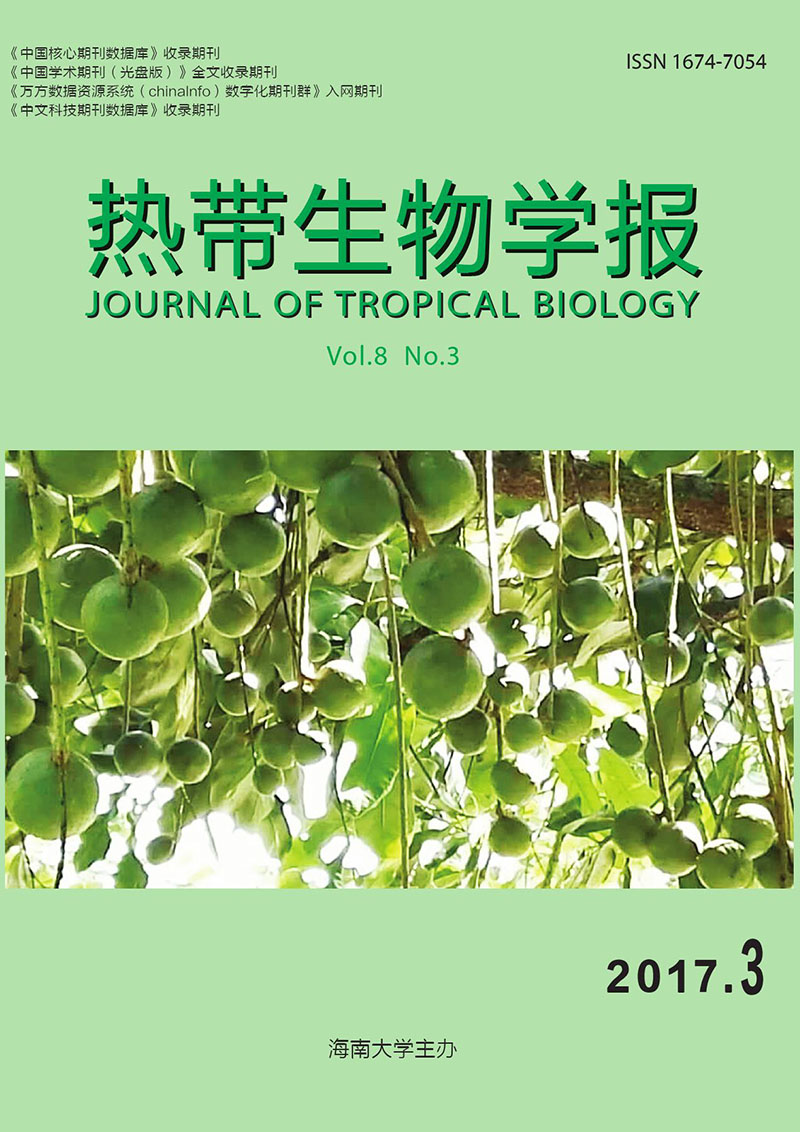The Structure and Physiological Characteristics of Cassava Leaves and Their Relationship with the Resistance to Bacterial Blight
doi: 10.15886/j.cnki.rdswxb.2017.03.007
- Received Date: 2017-03-03
- Rev Recd Date: 2017-04-11
-
Key words:
- Cassava /
- bacterial blight /
- resistance /
- leaf structure /
- physio-chemical
Abstract: Seedlings of six cassava cultivars with high resistance,medium resistance or high susceptibility to bacterial blight were selected to observe their leaf anatomical structure characteristics by using microscope.The seedlings were then inoculated with a strain(Xam HN04) of the pathogen of cassava bacterial blight [Xanthomonas axonopodis pv.malvacearum(Xam) ] to determine the change of peroxidase(POD) and polyphenoloxidase(PPO) activities and soluble protein content in the leaves.The results showed that the stoma density and wax content in the leaves were significantly higher in the resistant cassava varieties than in the susceptible ones,indicating that they were positively correlated with the resistance of cassava varieties.The palisade and spongy tissues of the resistant varieties were more compact and tight than those of the susceptible ones.In addition,the spongy tissues of medium resistant and highly susceptible varieties were relatively loose in structure with lots of spaces.The activities of POD and PPO in the leaves inoculated with the pathogen strain Xam HN04 were determined to be positively correlated with the resistance to the bacterial blight,and the content of soluble protein had significant change in the leaves after inoculation.These results implied that the leaf anatomical structure and physiological characteristics could be the markers for cassava resistance to bacterial blight.
| Citation: | LI Boling, HUO Benjun, ZHU Shoushong, XIONG Qian, LI Ke, LUO Lijuan, LI Chunxia, CHEN Yinhua. The Structure and Physiological Characteristics of Cassava Leaves and Their Relationship with the Resistance to Bacterial Blight[J]. Journal of Tropical Biology, 2017, 8(3): 292-300. doi: 10.15886/j.cnki.rdswxb.2017.03.007 |






 DownLoad:
DownLoad: